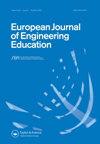在COVID-19大流行之前和期间,工程专业学生在两种以学生为中心的教学模式中的学习方法
IF 2.8
Q2 EDUCATION & EDUCATIONAL RESEARCH
引用次数: 0
摘要
在本研究中,我们调查了两种不同的以学生为中心的教学模式如何在危机时期促进工程专业学生的学习。我们分析了一所芬兰大学的学生(N = 375)在COVID-19大流行之前和期间学习四门工程数学课程的方法。在8个月的时间里,研究人员对学生的深度和表面学习方法以及有组织的学习进行了5次测量。对于对照组来说,以学生为中心的元素被添加到传统的基于讲座的教学框架中,而干预组的教学模式则更深刻地破坏了传统教学的结构。我们的研究结果表明,大流行和相关的限制与学生的深度学习方法和有组织学习的减少有关,而两组学生的表面学习方法都有所增加。然而,干预组的教学模式比对照组更支持深度学习方法。《欧洲工程教育杂志》版权归Taylor & Francis有限公司所有,未经版权所有者明确书面许可,其内容不得复制或通过电子邮件发送到多个网站或发布到listserv。但是,用户可以打印、下载或通过电子邮件发送文章供个人使用。这可以删节。对副本的准确性不作任何保证。用户应参阅原始出版版本的材料的完整。(版权适用于所有人。)本文章由计算机程序翻译,如有差异,请以英文原文为准。
Engineering students’ approaches to learning in two student-centred instructional models before and during the COVID-19 pandemic
In this study, we investigated how well two different student-centred instructional models fostered engineering students' learning in a time of crisis. We analysed students' (N = 375) approaches to learning during four engineering mathematics courses in a Finnish university before and during the COVID-19 pandemic. Students' deep and surface approaches to learning, as well as organised studying, were measured five times during an eight-month period. For the control group the student-centred elements were added to the framework of traditional lecture-based teaching, whereas the intervention group's instructional model disrupted the structures of traditional teaching more profoundly. Our results indicate that the pandemic and related restrictions were linked to a decrease in students' deep approach to learning and organised studying, and an increase of surface approach to learning in both groups. However, the intervention group's instructional model supported the deep approach to learning better than that of the control group. [ FROM AUTHOR] Copyright of European Journal of Engineering Education is the property of Taylor & Francis Ltd and its content may not be copied or emailed to multiple sites or posted to a listserv without the copyright holder's express written permission. However, users may print, download, or email articles for individual use. This may be abridged. No warranty is given about the accuracy of the copy. Users should refer to the original published version of the material for the full . (Copyright applies to all s.)
求助全文
通过发布文献求助,成功后即可免费获取论文全文。
去求助
来源期刊

European Journal of Engineering Education
EDUCATION & EDUCATIONAL RESEARCH-
CiteScore
7.30
自引率
13.00%
发文量
64
期刊介绍:
European Journal of Engineering Education is published six times a year in print and electronic editions and provides an essential forum for dialogue between researchers and specialists in the field of engineering education, at European and worldwide levels. European Journal of Engineering Education is the Official Journal of SEFI, the Socièté Européenne pour la Formation des Ingénieurs (the European Society for Engineering Education). SEFI is a non-governmental organization whose aims are to develop information about engineering education, to improve communication and exchange between professors, researchers and students and to promote cooperation between the various institutions concerned with engineering education.
 求助内容:
求助内容: 应助结果提醒方式:
应助结果提醒方式:


